Member of parliament, Mrs. Bhavana Tai Gavli, President ZP, Mrs. Harshada Tai Deshmukh, Commissioner Water Conservation, Shri Deepak J Singhal. were present during this workshop to motivate the team
Guardian Minister, Shri Ranjit Singh Patil, MP, Shri Sanjay Dhotre, District collector, Akola Shri Asit K Pandey, IAS; Divisional Commissioner, Shri Piyush Singh, and local public representatives were present during this workshop to motivate the team.
A technical workshop was conducted in Osmanabad in the presence of dignitaries like Ex-minister, Dr. Padma Sinha Patil, Guardian Minister Shri. Arjun Khotkar, and local public representatives.
A technical workshop was held in Latur in the presence of Guardian Minister Shri. Sambhajirao Patil Nilangekar, President NITI Aayog, Maharashtra, Shri Pasha Patel, District collector Latur, Shri G Sharikant, IAS and many other local representatives.
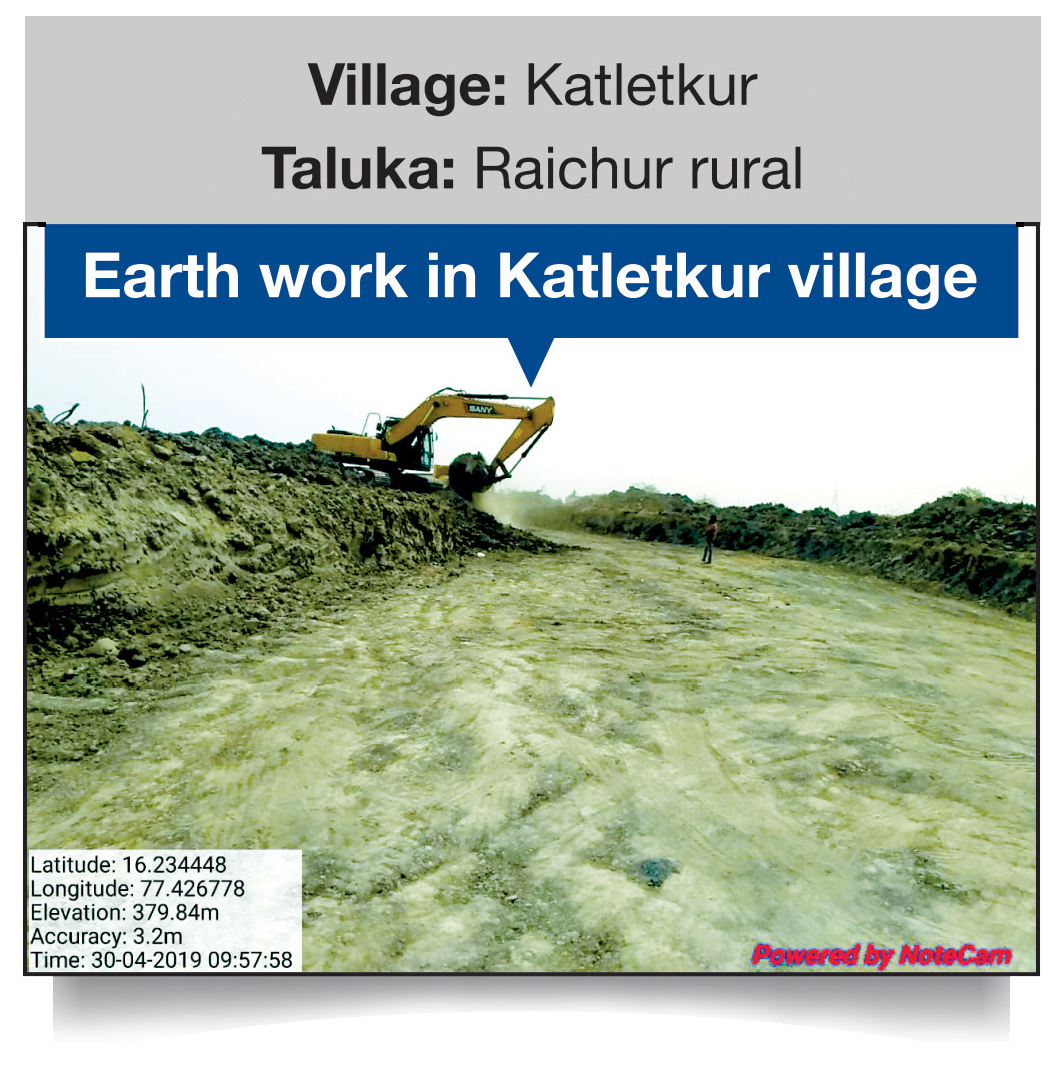
Katletkur is a small village in rural Raichur. It is a drought-prone village and falls in semi-arid area. Over the past few years, the village has faced deficit rainfall. Deficient rainfall in the area caused decreased moisture in soil, and resulted many farms empty during the dry months. The vil-lage is dependent on a pond for all its household requirements but it’s storage capacity has also reduced due to continuous accumulation of silt over the years.Due to scarcity of water for irrigation purpose, crop production has drasti-cally reduced since last 2-3 years. Nadeem who is a marginal farmer is also struggling with the same problem.Under ‘District-wide Water Conservation Project’ Bharatiya Jain Sang-hatana initiated the deepening work of pond. Silt sediments excavated during the earthwork, and transported by the farmers for spreading it in their farms. Nadeem also transported the silt in 350 trips of tractor and spread it in his 3 acres of land.Silt transported by farmers helped them to grow crops in Rabi season also. Nadeem whose land was infertile earlier has also benefitted with the moisture laden silt. The deepening of the pond caused increased percolation of groundwa-ter and with this now community is expecting to have increased level of water in the pond which will last for the prolong time.

Tuntapur village is 14 km away from Raichur. As per 2009 stats, total population of the village is 1377 only.The rain has been sparse since last few years and due to rain fed agri-culture, farmers were facing huge losse in crop productions. In addition to that, soil quality is also not favourable for agriculture purpose. The storage capacity of village pond declined gradually over the years due to siltation and hence the pond is also not able to fulfil the village household needs.Shivappa, a marginal farmer has to face huge loss in horticulture cultiva-tion of Mangoes. Alike Shivappa, other farmer’s agriculture production also affected badly.District Administration Raichur and BJS undertook earthwork, removed the silt and did the deepening work in the pond. Shivappa and other farmers spread the excavated fertile silt in their farming lands. Earthwork helped to increase percolation of groundwater and increases water level of the pond. With the arrival of good monsoon, and use of fertile silt villagers are now looking forward for ample water for irrigation and better yield in future.
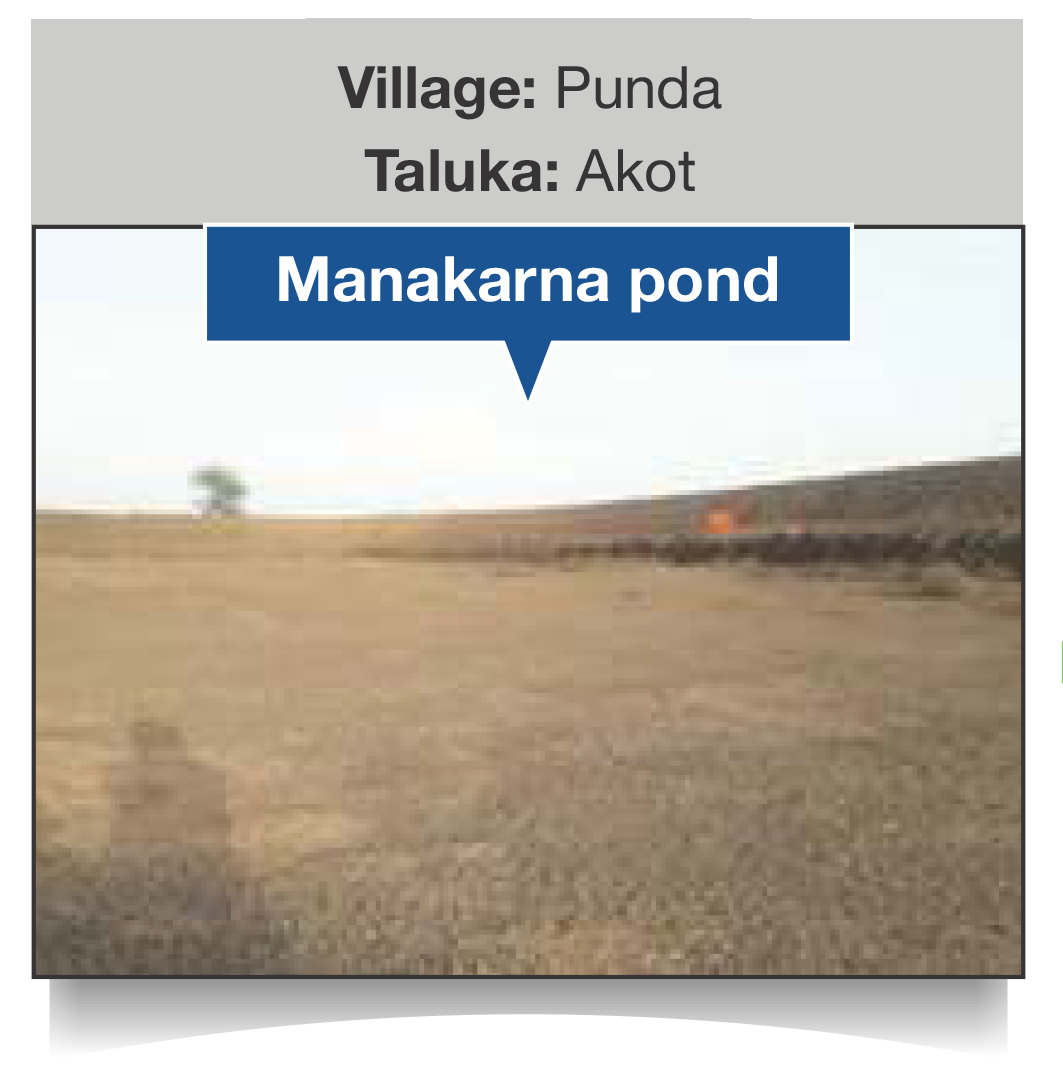
In Punda village, one of the most ancient pond is situated which is spread in 29 acres area. The pond has two parts: Manakarna and Nandisagar. Though water in Manakarna pond is sweet and the community uses this water for drinking purpose, still no maintenance or earth-work has been done in pond since 1984. thPond rejuvenation work was started on 16 January 2019 under Sujalam Suphalam project. Eart-work was conducted for 54 days using 3 backhoe machines and 45,000 cubic meters of silt was excavated. Approximate 167 farmers used the silt to spread it in their farmland hoping to get better yield of crops in the future.
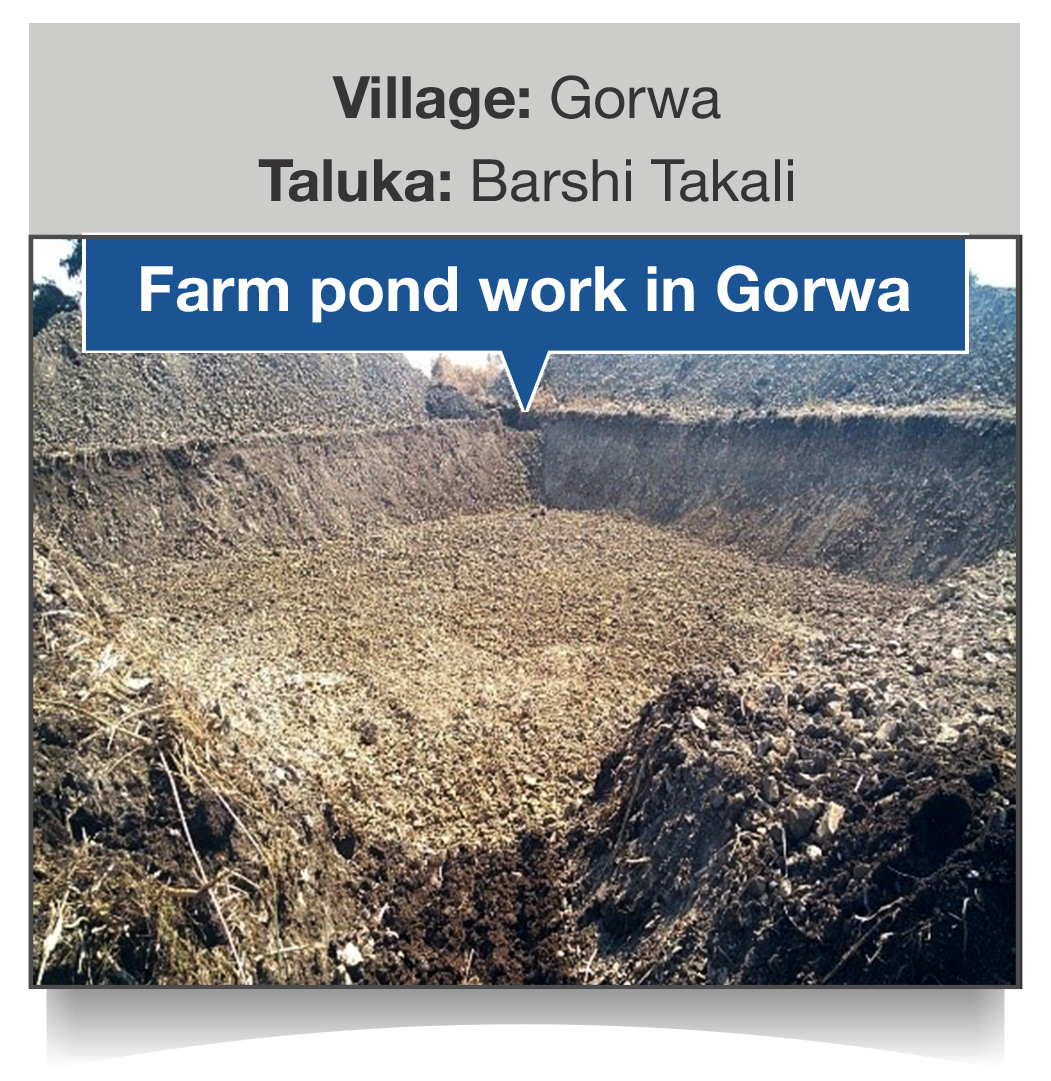
Maharashtra is facing drought since almost a decade now. Due to consecutive drought like situation, level of water in Water Bodies has decreased drastically and is affecting the socio-economic condition of the farmers and community badly. Gorwa is an agriculture dominated village in Barshi Takali Taluka with a population 1000 to 1200 people. Inadequate availability of water for irrigation was the main concern for the farmers. Basically the top soil cover got vanished and only rocky land was available. To get a better yield of crop ample availability of water is required. Due to undulating topography and considerable sloppy land, rainwater use to flow downward speedily. Village Head (Sarpanch) approached the Government to conduct the water conservation work in the village. Under ‘Sujalam Suphalam’ Naala deepening, farm pond, CCT, deep CCT, and all such works were executed on a large scale with the help of the Social Forestry Department, Agriculture Department, and ZP minor Irrigation department. Villagers are expecting that in the coming year rainwater will get stored in these water structures and will help them in farming.
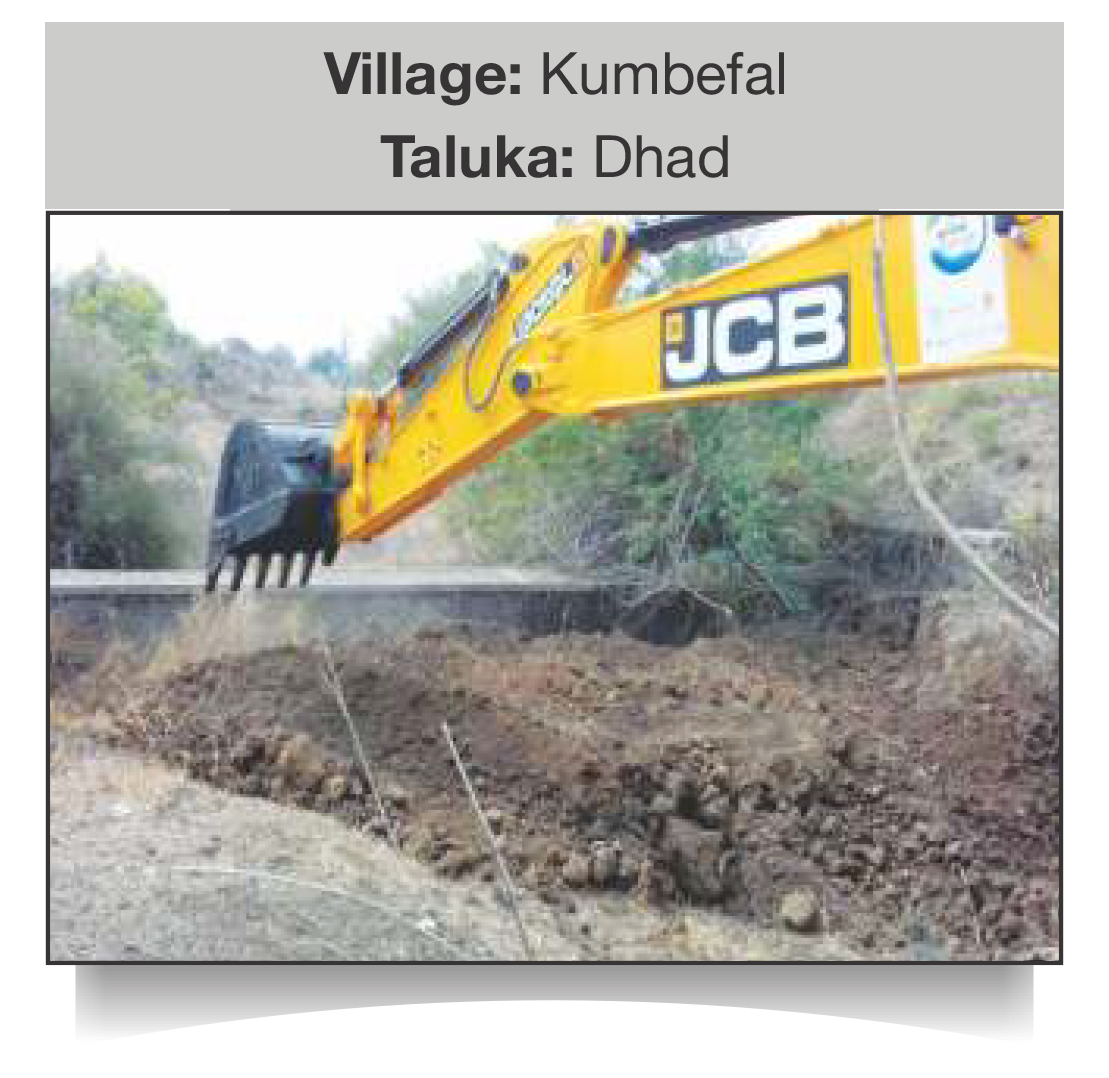
District Administration identified the priority water structures in all thirteen talukas of Buldhana and accordingly in consultation with the structure owner department delegated the work to all the concerned departments.
Shri Suresh Bagale, Buldhana Tehsildar, and his team while pursuing their work discovered a new water structure which was not in the list of the identified water bodies.
This water structure was present in the Kumbefal village where around 2500 to 3000 people were residing and struggling due to scarcity of water. The check-dam had lost its identity due to
many layers of silt stored over it. Villagers requested the district team to extend their support to revive it again.
The structure owner department team assessed the feasibility of the earthwork and did other pre-requisite formalities. Dhad cluster officer and concerned talathi took the lead for revival work of the dam. The revival of the ‘Kumbefal Bandhara’ brings immeasurable happiness in lives of the villagers!
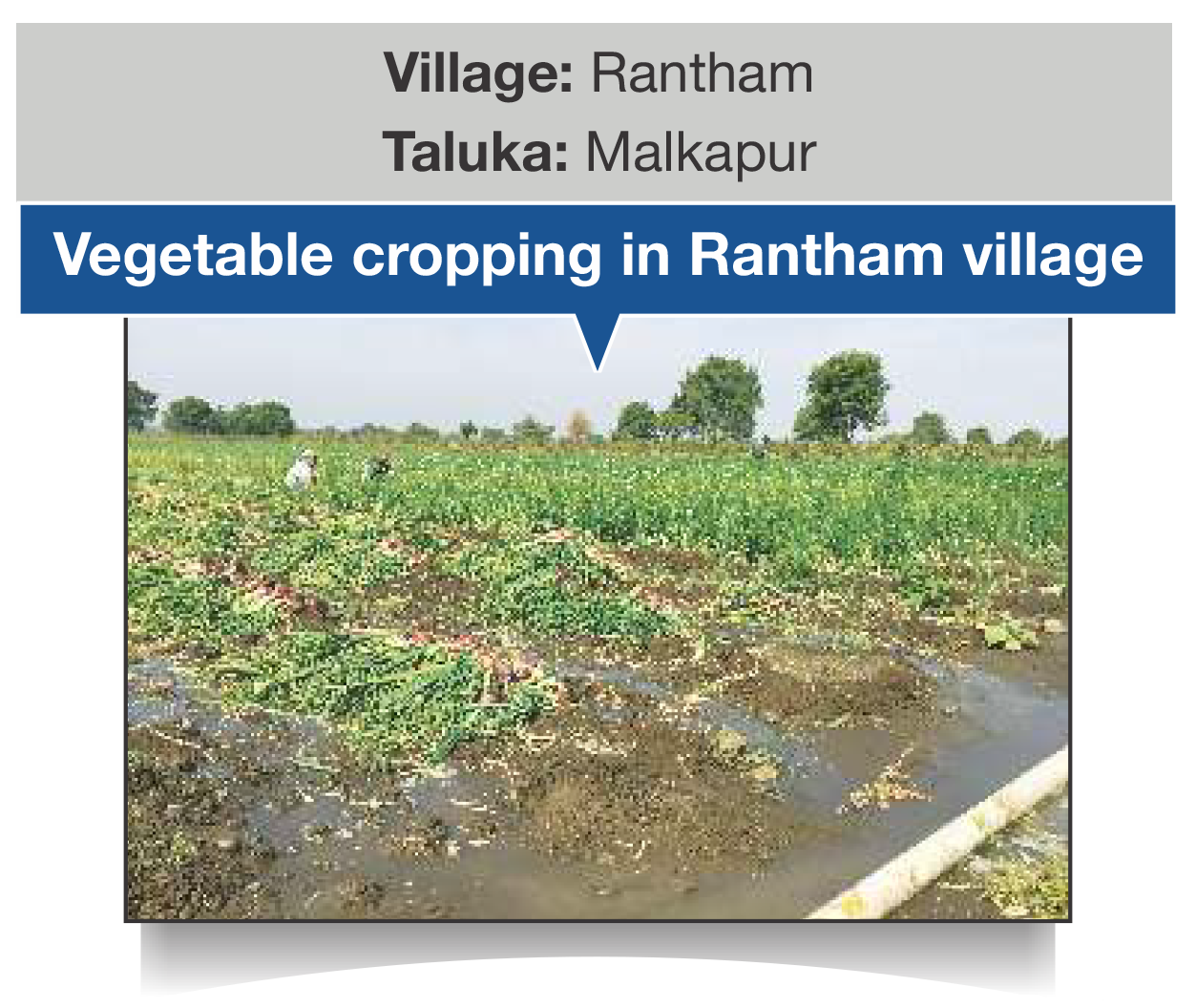
‘Rantham’ is a small village with a population of around 1300 only. Villagers are mostly involved in agriculture work. Lack of adequate rainfall has affected, the socio-economic condition of farmers. The only pond in the village has lost its water retention capacity due to lack of maintenance and accumulation of silt. District Administration and BJS carried out the required maintenance and earthwork in the tank and 31 thousand cubic meter of silt was brought out from its bed.
The earthwork of the pond brought about remarkable result for the villagers. The water conservation capacity of the pond increased by 31 Lakh cubic litres. Villagers used the water for agriculture purpose; they started wheat cultivation as well as large number of farmers started vegetable cropping. The silt used by the farmers reduced their expense on chemical fertilisers marginally. Village head (Sarpanch) also encouraged the youth for self-employment by giving them opportunity to do free fishing in the pond and also provided the fish seeds.
Thus ‘Sujalam Suphalam’ helped in rejuvenation of the village by increasing the soil productivity, ground water level, crop yield, and helped in changing the cropping pattern.
